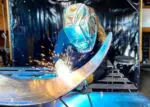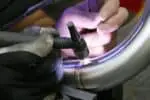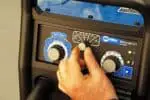Solar Eclipse. An interesting phenomenon. Isn’t it?
During a solar eclipse, you are warned not to look at it. But let’s be real here. Human curiosity often creeps up. Doesn’t it? But you are confused how to do it in the safest manner possible.
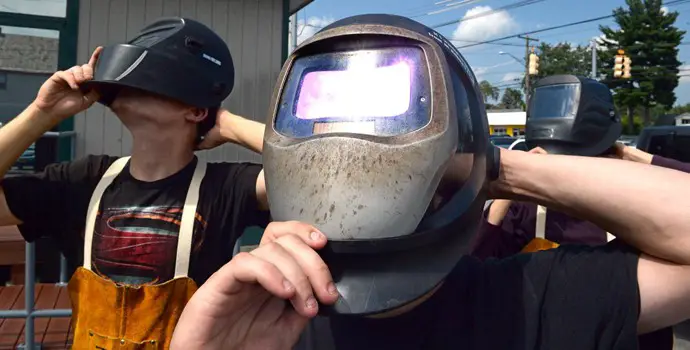 Out of the very few ways to watch a solar eclipse, using a welding helmet is often regarded as a plausible option. But is it a healthy option to watch a solar eclipse with an aid of a welding helmet? Are there any disadvantages with this?
Out of the very few ways to watch a solar eclipse, using a welding helmet is often regarded as a plausible option. But is it a healthy option to watch a solar eclipse with an aid of a welding helmet? Are there any disadvantages with this?
This blog can give you an insight into these questions…
A welding mask is indeed a viable option to view a solar eclipse. It is a proven fact that the darker shades of welding helmets can withstand the rays emitted during the solar eclipse. But, a user needs to take into consideration certain things before employing this technique to view a solar eclipse.
Why is it advised not to look at a solar eclipse with naked eyes?
It is said that even in normal conditions looking at the Sun for a prolonged period can affect our eyes badly. So how does it become even more harmful during a solar eclipse?
During a solar eclipse, the moon comes in between the Sun and the Earth thereby blocking the sunlight from reaching the Earth.
When this happens, the sunlight gets completely blocked by the Moon and the outer atmosphere of the Sun called ‘Corona’, starts glowing. This glow is what makes the situation dangerous. The rays emitted during this time if viewed with naked eyes can cause permanent damage to your vision.
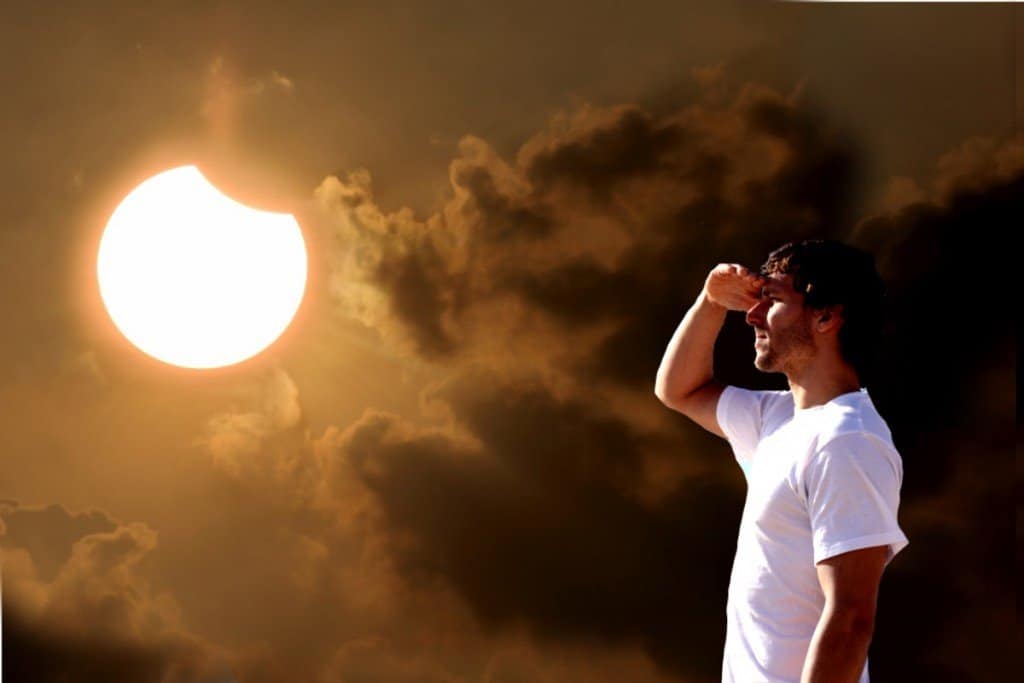
Yes, that’s right. These rays can affect the retinas that help to transfer the signal from your eyes to the brain. This can cause “retinal burns” or “eclipse blindness”.
It is a condition where you lose your eyesight either temporarily or permanently depending upon the intensity with which your naked eyes captured the rays. This condition is painless and therefore you will not know until it happens.
Sometimes it takes days to know that the damage has been done. The losing of vision happens gradually as the effect spread through the nerves leading to complete damage.
Despite warnings and research being done on the same, people often tend to disregard everything and try to outsmart others which ends up damaging their eyesight for good.
There are numerous ways through which a solar eclipse can be viewed safely. One of them being a welding helmet.
How a welding helmet becomes a viable option to view a solar eclipse?
During a welding process, the rays emitted are of different types. UVA, UVB, and UVC radiation are emitted in a huge number and with high intensity.
And these radiations can have dangerous effects on one’s health and skin. Just think how deep the damage can be if they touch one of the delicate parts of our body: the eyes.
A welding helmet is therefore made in such a way that the shields are strong and robust enough to prevent these radiations from affecting the skin and eyes of the welder.
Therefore, these welding helmets can act as a protective layer, strong enough to deal with the intense rays emitted during a solar eclipse
See also: What shade setting to use on welding helmet
What are the specifications to look for while selecting a welding helmet to view a total solar eclipse?
The welding helmet comes with shields. These are the actual protective elements that help the welder to keep his eyes safe from getting affected by the rays. The helmets are therefore the most important part of a welder’s work life.
Welding helmets are therefore one of the safest methods to watch a solar eclipse live. But, there are certain things that you need to know while selecting the best welding helmet to keep your eyes safe during the time.
As mentioned earlier, more than the other parts, it is the shield that matters a lot. These shields come in different capacities depending on the kind of work that you use them for.
Typically the shades range from 2 to 13. According to NASA, a welding helmet of shade 12 or above is ideal for watching a live total solar eclipse. The higher the shade, the better.
However, when the shade is 12 or 13 it will be dark and the vision will also take the same touch. But for your safety, it is very much necessary to keep the shade number high.
If you are going for older welding helmets you might not get the required shade. Therefore, it is a must that the helmet you choose need to be a modern one.
There are two types of modern welding helmets: auto-darkening and fixed shaded. The auto-darkening helmets have the feature through which you can adjust the sensitivity which is very essential for this process.
These conventional helmets therefore can change their shades depending upon the situation. The fixed shade welding helmets have lenses with a fixed filtering capacity.
Always prefer the advanced helmets over the rest as the shading capacity and elements involved in their making are of supreme quality and especially the mechanism for auto-darkening helmets are a necessity to protect the eyes in the right way.
What are the safety protocols that I need to maintain before and during a solar eclipse while watching it using a welding helmet?
There is no question of safety when it comes to using a welding mask to view a solar eclipse. But, even then there are certain things that you need to ensure before using a welding helmet to view a total or partial solar eclipse. Let’s briefly touch upon them…
1.) Ensure that the lenses are scratch-free so that the UV rays cannot in any way reach your eyes.
2.) Do not change the position of the helmet once it is placed on your head in the right way. People tend to move the helmet without knowing it is being done. This can only result in the penetration of the UV rays and the person will be unaware all the while it happens.
3.) An inspection of the lenses before using them is very much needed. You don’t want to make a blunder and realize it way afterward.
4.) Do NOT remove the welding helmet in any circumstances.
5.) Try to stand in one place, without moving while watching the eclipse.
6.) Torn, damaged, or punctured helmets shall never be used.
7.) Ensure that the right shade is used. This is a very important thing that ought to be done without fail.
Is there any other way to watch a solar eclipse safely?
The other way to watch a solar eclipse safely is through special-purpose solar filters. These filters are not to be made at home. These filters or glasses need to be made and certified according to the standards of the International Standard Organisation (ISO).
They need to meet the international standard called ISO 12312-2. The density of the filter must be high enough to give protection. Scattering of light should therefore be minimal. They come in two types either with plastic filters with light-absorbing materials inside or with a plastic layer with a metal coating.
The most attractive thing about these solar filters or eclipse glasses is that they are readily available at low cost, while welding helmets are found only with people who are into the field of welding.
Comparison of Different Ways to View Solar Eclipse
| Areas | Auto-darkening helmets | Passive helmets/Fixed shade helmet | Special-purpose solar filters |
| Affordability | Expensive | Not expensive | Inexpensive |
| Safety | Highest | Medium | Medium |
| Size | Bigger | Smaller | Smaller |
| Versatility | Possible | Not Possible | Not Possible |
| Operation | Complicated | Not complicated | Not complicated |
| Weight | Heaviest | Lighter than Auto-darkening helmets | Lightest |
Therefore a welding helmet is unequivocally a viable option to view a solar eclipse. However, you need to know how to use them and what all need to be taken into consideration before and while using them. One momentary slip can cost you your eyesight.
So next time, find one welding helmet to capture the wonder that comes once in a while!


